Ryan Hall's Blog, page 255
May 16, 2016
6 Summer Trail Getaways
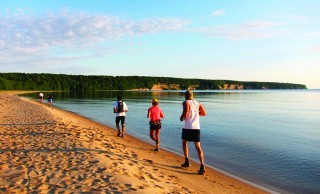
Runners enjoy the tranquility of Trout Bay 7.5 miles into the Grand Island Trail Marathon. Trout Bay is located on the northeast side of Grand Island and looks out on to Lake Superior, the world’s largest freshwater lake. Photo: Mike Verhamme
Ahh, summer. Kids out of school, hot-weather running, and a trip here and there. We’ve pulled together six non-ultra-distance trail races in fun-to-visit towns to give you ideas for the best summer vacation ever.
Pinkham Notch, N.H.
Wildcat Mountain Trail Race, June 26
Two race options—a 5K that cuts across Wildcat Mountain and a 5-miler that climbs to the 4,062-foot summit and back down—take place on the Wildcat ski trail system in New Hampshire’s White Mountain National Forest. A beer garden, barbecue and live music lend a festive atmosphere to the finish, and a nature walk to a nearby waterfall takes place during the race. On the rest of your trip, enjoy the quaint, scenic and outdoorsy Granite State.
Lake Tahoe, Calif./Nev.
Run to the Beach 5K/10K, July 4
Spend a long weekend around the Fourth of July at Lake Tahoe, swimming in the crystal clear (but cold!) lake and enjoying trails through dense pine forests and aspen groves, past smaller alpine lakes and along granite-riddled trails. On the morning of Independence Day, run this swooping, fast 5K, or the 10K course with a hearty climb—both races end on the sandy beach at Tahoe Vista with refreshments—including beer. Holiday fireworks light up the lake the night before.
Sun Valley, Idaho
Elephant’s Perch Backcountry Runs, July 16
Sun Valley in the summertime means bright sun, gorgeous mountains, wildflowers and all the outdoor activity you could ever want. On race day, choose from a 3- or 9.5-mile trail race; the 9 a.m. start means there’s time to actually enjoy your coffee. In addition to great running, hiking and mountain biking trails, Sun Valley is known for golf and tennis. Make this a family friendly, multisport trip with a trail race thrown in.
Silverton, Colo.
Kendall Mountain Run, July 23
Travel to the historic mining town of Silverton, for some rugged, high-altitude miles, including this lung-searing 12-mile race. The Kendall Mountain Run starts at 9,318 feet, tops out with a scramble to the mountain’s summit at 13,066 feet (that’s roughly 3,700 feet of climbing), then back to town. As part of the Sky Runner series, with $2,500 in prize money up for grabs, expect some competition. But all levels are welcome, and an 11K version may be more appealing.
Munising, Mich.
Grand Island Trail Marathon, July 23
We know we said “non-ultra distance,” so consider running the half marathon on Grand Island’s trails (or run the marathon or 50K, if you’re up for it). All races take place on Grand Island in Lake Superior, a 10-minute ferry ride from Munising. Race courses run along the pristine coastline of the island, bluffs, sandstone cliffs and into the woods and the tombolo—the sand bar that ties the island to its thumb.
Bend, Ore.
Haulin’ Aspen Trail Marathon, Aug. 6
Summer in the land of craft beer and sweet singletrack is the trail runner’s ideal vacation. The Haulin’ Aspen combines the two with a trail marathon, half-marathon and 6.5-mile race (dubbed the “Half-As”), with local beer and eats at the finish. The courses mix singletrack and forest service roads with grand views of the Cascade Mountains. The rest of your trip includes lounging by the Deschutes River, running more trails and sampling Bend’s many brews on the“Bend Ale Trail.”
The post 6 Summer Trail Getaways appeared first on Competitor.com.
Coach Culpepper: Take Advantage of the Summer Months
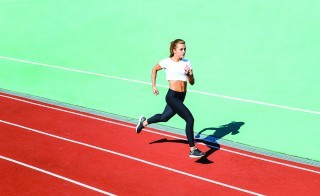
Photo: istockphoto.com
Summer is right around the corner and will again present a great opportunity to take advantage of more daylight, fewer weather constraints and a more laid-back attitude in general. There is no better time of year to shift your focus or rededicate yourself to training. Think about what resonates with you at this point of the year and choose one of three elements listed here to focus on so you can have your best summer of training and racing yet.
Get Fast
Many athletes neglect speed as they age and move up in distance. There’s a natural tendency to shift toward those aspects of running that feel the most comfortable, such as running slower and/or longer. This is often the demise of many runners. Don’t let moving up in distance and slowing down your pace be an excuse for doing less speed work. Done properly and carefully, speed work can benefit you in many ways. Include shorter, faster sessions once a week—such as one of the four listed at the beginning of this month’s training section—shift some workouts to a nearby track or force yourself to decrease your mileage and intentionally increase the pace of your daily runs. You’ll get faster, improve your overall athleticism and have more fun.
RELATED: Speed Workouts You Can Do Anywhere
Get Strong
Summer can also be a great time to get strong. By getting strong I do not mean going to the gym, although it’s not a bad idea. I’m referring to getting strong in the aerobic sense. Since summer weather is typically more favorable, take advantage and run a few more miles. A summer base-building phase is an excellent way to elevate your fitness for the fall racing season. The base phase is one of the most neglected aspects of training. Many athletes go from race to race or marathon to marathon and fail to take a significant chunk of time to focus on their overall aerobic development. Over the summer, gradually increase your mileage for 10–12 weeks; include some solid long runs and strength-focused workouts such as tempo runs or long intervals. A good base phase can be a game changer, regardless of what distance you’re training for.
RELATED: The Basics of Base Training For Runners
Race Often
Racing more often can be a great way to break up your summer and test yourself in different scenarios. One week you could line up for a long trail race, the next week a faster 5K or 10K. Many local track clubs offer a summer track race series, which is a great way to enjoy a different type of racing. Travel somewhere fun or include a race in your vacation plans. Racing does not always have to be centered on setting a personal best—you can use races for long runs, speed work or one of your hard workouts for the week. Races allow you to get in a good effort and simply enjoy the event atmosphere.
RELATED: 36 June Races to Sign Up For
The post Coach Culpepper: Take Advantage of the Summer Months appeared first on Competitor.com.
Photos: ASICS’ Inaugural Vine Body Sole Event in Napa Valley
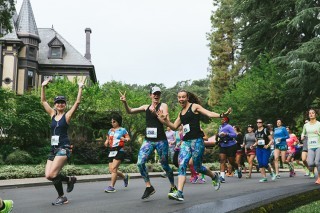
California’s wine country was the location for ASICS’ inaugural Vine Body Sole event this past weekend, with three days focused on celebrating fitness and friends and ASCIS’ mission of “Sound Mind Sound Body.”
Designed by Destination Races and sponsored by ASICS, the program offered a welcoming array of activities, including yoga, workouts, meditation and running, with plenty of time to enjoy good food and wine in a beautiful setting. At a special opening dinner held at Beringer Vineyards, Olympian Deena Kastor shared that her perfect day, much like Vine Body Sole, includes running, family, friends and wine. Based upon the finish line smiles, it seems plenty of attendees agreed. For more information about upcoming events, go to asicsvinebodysole.com.
Photo Gallery
1 of {count}
Back to Start
View Larger Image

The first day began with sunrise yoga and fruit smoothies at Charles Krug Winery and Estate Carriage House. An afternoon meditation session and sunset yoga were also available. Photo: Allison Pattillo
View Larger Image

Anna Kaiser of AKT in Motion came from New York City to lead a heart-pumping, muscle-burning boot camp class on the lawn at Charles Krug Winery and Estate. Post-workout attendees sampled Charles Krug wines and enjoyed an avocado toast brunch. Photo: Allison Pattillo
View Larger Image

As part of the entry fee, all participants received a pair of ASICS shoes at packet pick-up. In addition to shoes, the pop-up boutique included clothing and wine-themed mementos (like wine openers). It took place at Cairdean Winery Estate making it convenient to sample wine as well. Photo: Allison Pattillo
View Larger Image

Olympic middle-distance runner and ASICS athlete Alysia Montaño was all smiles at the start of the half marathon. Photo: Allison Pattillo.
View Larger Image

More than 360 women, and a few men, lined up at the start of the half marathon, which began at Beringer Vineyards. Runners could also complete the route as part of a relay team. Race day weather was ideal for running, with temperatures in the 50s, a light breeze and cloudy skies. Photo: Allison Pattillo
View Larger Image

Miles were marked with encouraging signage, like this one at mile two with Duckhorn Vineyards in the background. Photo: Allison Pattillo
View Larger Image

No wine was served on the point-to-point course, but everyone still had plenty of fun. Photo: ASICS America
View Larger Image

Mileage signs also offered wise advice. Photo: ASICS America
View Larger Image

Runners passed by more than a dozen wineries and vineyards along the rolling route. Photo: ASICS America
View Larger Image

The course finished in the middle of the vineyard at Charles Krug Winery and Estate. Deena Kastor and Alysia Montaño were on hand to cheer runners at the finish. Photo: Allison Pattillo.
View Larger Image
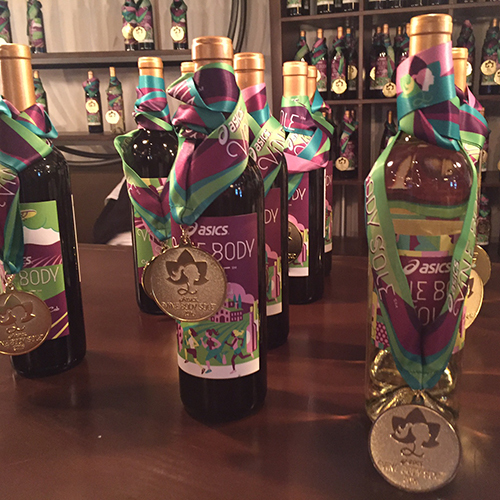
All finishers received a tasting glass, medal and a bottle of wine. The Finish Line Festival included music, wine tastings, medals and massages. Photo: Allison Pattillo.
View Larger Image

A happy 13.1-finisher with her medal and wine at the entrance of the main Festival tasting room, the ASICS Wine Cave in the Carriage House. Photo: Allison Pattillo.

More Galleries
The post Photos: ASICS’ Inaugural Vine Body Sole Event in Napa Valley appeared first on Competitor.com.
Strength Training is Good for You, Runners—Here’s Proof
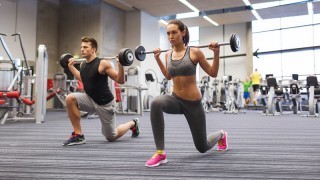
By now, I know that you know (or at least have heard) that strength training is beneficial to runners. So, what’s stopping you? After reading (or skipping over) article after article about resistance training and runners, why have you still not drank the Kool-Aid and crossed over to the dark side?
Whether it’s lack of time, fear of gaining too much muscle, doubt in the relevance of strength in an endurance sport, or you flat out don’t buy it, there seems to be plenty of reasons to stick to the old “tried and true” method of simply running to become a better runner. But I challenge you to, at least, consider the idea of adding some strength training; look at the facts, even give it a try for a few months before deciding whether or not it’s an efficient way to spend your training time.
RELATED: Why Runners Should Do Eccentric Training
Some Evidence to Ponder
Let’s first take a look at research from the Stone Age (1980); moderately-trained runners displayed a 13-percent improvement in treadmill running after completing a combination of strength and endurance training for 10 weeks. Fast forward a couple of decades to a study that looked at the effects of eight weeks of concurrent maximal strength training and endurance training on well-trained distance runners. Here, the results spoke for themselves: a 26-percent increase in rate of force development (how fast your foot leaves the ground), 5-percent increase in running economy (how efficiently your body produces and uses energy while running) and a 21.3-percent increase in maximal aerobic speed.
But, what I’m most interested in sharing with you is a very recent study set to be published in the Journal of Strength and Conditioning Research. Researchers took 20 competitive distance runners and divided them into two groups. One group continued on with their regular endurance training while the second group added strength training to their training routine for 40 weeks.
At week 0, 20 and 40, each subject’s physiology, vVO2 max (velocity at maximal oxygen uptake), running economy, strength and body composition were assessed. Researchers found the intervention group (those who strength trained) showed significant improvements in maximal- and reactive-strength qualities, running economy and vVO2max at 20 and 40 weeks.
Yes, it does sound similar to the other studies. However, this study also found that despite all of these significant improvements in performance, there were no significant changes in body composition – meaning the runners did not gain extra muscle mass. Another interesting point in this study is the fact that the runners only strength trained two times per week for the first 20 weeks (preseason) and once per week for the last 20 weeks (in-season) – that’s two hours per week max spent strength training, a pretty meager time commitment. Most of the improvements were attained in the first 20 weeks and then maintained for the remainder of the study.
For those of you still on the fence, thinking I’m happy with where I’m at and not hitting the weights isn’t going to affect my performance, here’s one more element to consider. In this study, the runners in the control group, the group who did not strength train, displayed a 7.9-percent deterioration in reactive strength throughout the 40-week racing period. They actually lost strength during the course of the running season.
RELATED: 6 Useful Variations to Traditional Strength Exercises
Is The Dark Side Looking a Little Brighter?
The fact that strength training has been shown to improve running economy in well-trained and competitive distance runners speaks volumes. At this elite level, most runners are already at the top of their game – which means if it’s able to up their performance, you can bet it will do wonders for the rest of us sub-elite runners. If you’re looking to optimize your running performance, weather you’re running your first 5K this year or shooting for a sub-three hour marathon time, you may want to consider upping your weekly dose of strength work.
One note of importance, your strength training program should complement your endurance training, not hinder it. Therefore, your programming needs to be on point. If you’re not equipped to determine when, how much, and at what intensity to lift, or how to incorporate weights into your current training plan, seek professional guidance. There are plenty of strength and conditioning coaches out there who would be more than happy to set you up for success.
RELATED: How Runners Can Train the Posterior Chain
References
http://www.ncbi.nlm.nih.gov/pubmed/18460997
http://www.ncbi.nlm.nih.gov/pubmed/18460997
The post Strength Training is Good for You, Runners—Here’s Proof appeared first on Competitor.com.
Photos: 2016 Healthy Kidney 10K in New York City
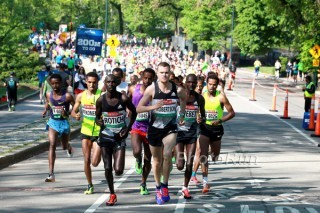
More than 8,000 runners flocked to Central Park in New York City on Saturday to race the Healthy Kidney 10K, one of Competitor’s bucket list 10Ks in the United States.
Included was an impressive pro field aiming for the lofty $25,000 prize for first place. Those checks eventually went to Kenyans Lucas Rotich with a time of 28:29 in the men’s race, and Cynthia Limo with a 31:39 in the women’s race.
Here are photos from the elite race, taken by PhotoRun.net:
Photo Gallery
1 of {count}
Back to Start
View Larger Image

View Larger Image

View Larger Image

View Larger Image

View Larger Image

Scott Bauhs finished 11th in 30:53.
View Larger Image

Wilson Chebet took second in 28:37.
View Larger Image

View Larger Image

2016 Healthy Kidney 10km
Lucas Rotich of Kenya
View Larger Image

Zane Robertson of New Zealand finished fourth in 29:02.
View Larger Image

2016 Healthy Kidney 10km
Rotich crossing the finish line in Central Park.
View Larger Image

View Larger Image

The lead pack in the women's race.
View Larger Image

Laura Thweatt finished sixth in 33:20.
View Larger Image

Edna Kiplagat, who finished third in 31:58.
View Larger Image

View Larger Image

American Maegan Krifchin finished in 34:01 to place eighth.
View Larger Image

View Larger Image

View Larger Image

Cynthia Limo crossing the finish line on top.
View Larger Image

The winners.
Related Galleries

Photos: 2016 Medtronic TC 1 Mile

Photos: 2016 Tinkerbell Half Marathon
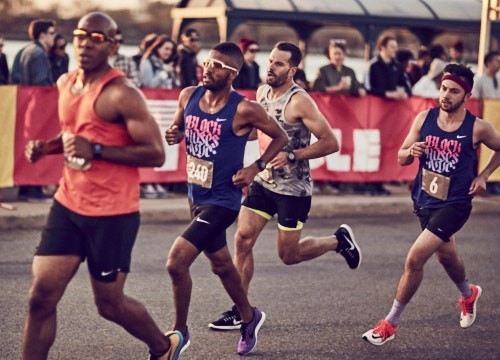
Photos: The One-of-a-Kind Red Hook Crit 5K in Brooklyn

Photos: 2016 Pittsburgh Marathon

More Galleries
The post Photos: 2016 Healthy Kidney 10K in New York City appeared first on Competitor.com.
Nike Unveils New Zoom Streak 6 Marathon Racer
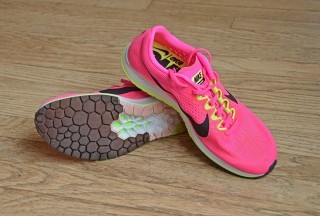
Nike used input from elite marathoners to develop the Zoom Streak 6. Photo: Jonathan Beverly
Two and half years ago, when Nike decided to make running a major focus of the company once again, they assigned a small team to revisit racing shoes. They began by talking to marathoners, and discovered that many were wearing flats that were seven to 10 years old, shoes like its Marathoner model worn by Paula Radcliffe in 2003 or the two-generations-old Zoom Streak LT 3. To learn where it had gone wrong, the team flew to Kenya and spent a week with elite marathoner Eliud Kipchoge, running with him and others in Patrick Sang’s training group and talking about what they liked and didn’t like in shoes.
The first characteristic of the shoe they developed is its more foot-shaped last. No longer the tight, narrow toe of traditional racing flats, the Zoom Streak 6 flares forward of the arch, particularly on the medial side to leverage the push-off power of the big toe.
The Nike team also made sure the sole of their new racer didn’t have a specific flex point like many racers. Instead, a strong upward turn of the toe, as well as a slight rocker shape across the foot, allow for a rolling stride and the flex—which occurs wherever your foot most needs it—bounces back quickly due to a plastic flex plate embedded in the midfoot.
The Nike team brought a prototype of the shoe to Kipchoge the Wednesday before the 2015 London Marathon. Kipchoge walked around in them for two days, as is his habit, according to Seb Tesche, Nike Product Line Manager of the “Fast” team, and declared the night before, “I’m absolutely going to run in them.” He did, and won (in 2:04:42). In the coming year, Kipchoge continue to help the Nike team refine the shoe. “He’s good at nudging us in the right direction,” says Tesche.
Kipchoge ran 2015’s fastest marathon time (2:04:00) in the next version of the shoe at the 2015 Berlin Marathon, but unfortunately all the headlines were about the insoles that came loose and flapped in the wind for much of the race. Nike rues letting their ace down, but lessons were learned. Rest assured, the insole on the Streak 6 is firmly anchored. We couldn’t pull it out or even loosen it with considerable effort.
RELATED: Sneak Peek—40 Shoes You’ll Want to Check Out in 2016
Another change came about when Evan Jager, the American record-holder in the steeplechase, showed designers his bloody feet after a hard 800m workout where the flywires on his racers had dug in too hard. Nike designers ditched the flywires on their racers, both road and track. Instead they have integrated an interior midfoot wrap, made of a soft and flexible (but less-stretchy) material, that ties directly to the laces. As a nod to the popular Streak 3, which had a light, open, mesh with holes throughout, the new, engineered mesh on the Streak 6 also has holes that let you see your socks. Look closely, however, and you’ll see they are bridged with a thin layer of translucent yarn to maintain integrity and durability.
At the U.S. Olympic Trials Marathon on Feb. 14 in Los Angeles, men’s winner Galen Rupp, women’s winner Amy Cragg and third-place finisher Shalane Flanagan all wore prototypes of a shoe developed alongside the Streak 6. The 2016 London Marathon saw the debut of the final Streak 6, which reached the finish on the feet of victor Kipchoge in a time of 2:03:05 as well as on runner-up Stanley Biwott and women’s winner Jemima Sumgong (2:22:58).
RELATED: Brooks, Nike Lead U.S. Olympic Trials Marathon Shoe Count
How does it feel on the foot? Remarkably smooth and protective, while light and fast. We took it on track workouts, road repeats and steady runs, and from the beginning felt like we could fly—without getting beat up from the ground underfoot or by a constrictive, rigid upper. The 8mm drop and zoom air under the heel provide plenty of support for later miles of the marathon when everyone’s form reverts to heel striking (maybe not Kipchoge). But the protection doesn’t affect the weight (6.7 ounces in men’s 9) or the ride at top speed, when you’re rolling fast off your midfoot and toes. The fit is snug, as befits a racer, but you should check the size before you buy.
The Streak 6 will retail for $110 when it becomes available on June 1 and should make a great racer for many, a marathon shoe for the swift and even a light trainer for the efficient.
RELATED: Nike Unveils Innovative Free RN Motion
The post Nike Unveils New Zoom Streak 6 Marathon Racer appeared first on Competitor.com.
What Is The Fight Over Rule 40 and Why Should You Care?

Illustration: Michelle Schrantz
This summer, you’ll see lots of ads featuring Olympic athletes promoting shoes and watches and food and bags and credit cards and a whole host of other things. But if you pay close attention, you’ll notice something new: many of the ads leading up to and during the Games will never use the word “Olympics.”
Actually, they won’t use any of these words: Olympics, Rio, rings, summer, games, gold, or medal. And the phrase “Road to Rio” is entirely out of the question.
That’s because something new will happen for the first time this summer: there will be advertising of Olympic athletes during the Olympic Games from companies that are not official Olympic sponsors. And those new ads are coming with a bunch of rules.
“It’s opening up a whole new level of opportunity,” says Jon Mason, the associate director of communications for the U.S. Olympic Committee (USOC).
Historically, there has been a blackout period for five weeks around any Olympics, during which athletes cannot appear in ads—except for companies who have paid to be official Olympic sponsors. Worldwide partners, like McDonald’s and Coca-Cola, pay about $100 million apiece for this exclusive right, with smaller companies paying anywhere from $20 million to $60 million for lesser rights.
What the blackout period meant was that swimmer Michael Phelps was not allowed to appear in any Under Armour ad or promote Under Armour in any way during the London Games, or he risked being kicked out of the competition. (In fact, Phelps briefly got in trouble when a not-yet-released ad for Louis Vuitton was leaked during the blackout period.)
The effect of that blackout period on athletes has meant that when their value is the highest—during the Olympic Games—they could not cash in on it, nor could they compete on the open market for the highest price for their abilities. Athletes’ frustration with this state of affairs reached new heights in London in response to restrictions around what they were allowed to say online or on social media. Athletes like Lashinda Demus, Sanya Richards-Ross and Nick Symmonds posted pictures of themselves with tape over their mouths or tagged posts #WeDemandChange.
Last summer, the rule that governs that blackout period—Rule 40—was revised by the International Olympic Committee. “It’s positive that they listened,” says Demus, on the up side.
But there are still a few problems.
“It’s not really better,” Demus argues. She sees issues with how the rule was revised and how it’ll be implemented. Companies that want to run ads during the blackout period had to submit a waiver in January with all their planned marketing materials, including which athletes they want to promote. But most athletes hadn’t even made the team by January, she pointed out, so how could companies know who to market? The advertising also had to start running in March and has to run (in some form) continuously through August, so as to not unfairly capitalize on the three weeks of the Olympics. That application submitted in January also had to include all aspects of all campaigns so that it could be approved by the USOC—even social media campaigns, like Facebook posts and tweets. And those ad materials can’t use any Olympic-specific intellectual property, ie. pictures of the rings, or words like “medal” or “summer” in a context that implies the Olympics.
“I think it’s a massive joke,” says Symmonds, citing the same concerns.
Brooks, Symmonds’ primary sponsor, did initially put in for a waiver, but ultimately decided not to pursue it because it didn’t have all the advertising materials finished by then, and didn’t have the money or time to complete them in time. Symmonds is also sponsored by a company he started, Run Gum.
“Run Gum certainly can’t afford to do that,” he says of the waiver application process.
Sally Bergesen, founder of the women’s apparel brand Oiselle, has been outspoken in her criticism of Rule 40 and of the restrictions limiting athletes’ sponsors. Because Oiselle is a small company, sponsorship of its 32 elite athletes is a “significant part of our budget,” explains Bergesen. For a bigger company, like Under Armour, going through the waiver process might not have been as debilitating, just a line item on the budget, she says. Bergesen ultimately did not pursue the waiver to get her proposed advertising campaigns approved. “We just don’t think it’s worth it,” she admits.
Without an approved campaign and waiver under the new Rule 40, Oiselle is still subject to the blackout period and cannot promote any of its athletes, even those who might make the Olympic team, like Kara Goucher. During the Games, then, “there’s zero visibility for us and there’s zero visibility for our Olympic athletes to talk about us,” she says. She argues that the limitations on social media even prevent her from tweeting about the Games or posting something like, “Go get ‘em Kara!”
Bergesen is right that if her tweet was construed as an ad, similar to a congratulatory ad on TV, then Oiselle could face a request to cease-and-desist. But it all depends on the context in which words like “summer” or “effort” or “go for the gold” are used on social media. If they’re used to profit by implying a connection to Olympics or Olympic athletes, then that’s not allowed, Mason says.
Companies like Under Armour and Gatorade, though, are eagerly taking advantage of the new rules and expanded opportunities for advertising. “We’re extremely excited and supportive,” says Peter Murray, Under Armour’s vice president of global brand and sports marketing. He said he has no complaints about the approval process and understands that the IOC and USOC need to protect their intellectual property.
If you’ve seen the Under Armour Michael Phelps video that was released online in March, then you’ve seen one of the pieces of their planned months-long Olympic campaign. In the ad, neither the Olympics nor Rio are ever mentioned. Instead, flashing lights from photographers imply the media craziness Phelps faces. As he swims, music plays with lyrics about “the last goodbye.” Even without mentioning “medals” or “summer,” you get the idea.
Now, instead of having to stop that ad at the end of July, Under Armour can fully capitalize on its sponsorship of Phelps. It will be able to continue to promote him and the 250 other athletes it supports, all summer, when people are paying the most attention.
Mason says this is the point of the revised rules: for athletes with ongoing sponsorships to be able to take advantage of them. The USOC approval process, he said, is supposed to be a collaborative effort, so that everyone ends up with a product they’re happy with—and nearly all of the ads that were submitted, and that companies chose to continue pursuing, were approved on the first or second attempt.
Mason also points out that some of the issues companies are facing with the waiver process are the same issues Olympic partners sponsors face. No one knows who will make the Olympic team, yet ads have to be prepared anyway. “It’s part of the challenge of Olympic advertising,” he says.
In the U.S., the Ted Stevens Amateur Sports Act of 1978 gives the USOC sole copyright to the word “Olympics” and its accompanying intellectual property. That is the law that gives the USOC the right to ban words like “summer” or “effort” from ads. To be clear, though, those words are “absolutely fair use” outside of the context of the Olympics, explains Frank Ryan, a lawyer for DLA Piper who has worked on sponsorship and media deals for the IOC, national governing bodies, and corporate sponsors. It’s only when you’re using those words to imply a commercial association to the Olympics that doesn’t actually exist, “trying to benefit off the goodwill of the Games,” he says, that you run the risk of violating intellectual property rights.
The rights to Olympic intellectual property are used to raise money to fund the USOC, whose annual budget during the last summer Olympic year was $247 million. It costs about $40,000/athlete, said Mason, to send competitors to the Olympics—once you count apparel, coaching staff, trainers, and equipment.
Yes, he understands that it’s hard to make a living as an athlete. And the more sponsors there are in the space the better it is for everyone. “But, at the same time, it costs a great deal to take a team to the Games,” he says.
Theoretically, if Olympic partners like McDonald’s and Coca-Cola pay big bucks for exclusive rights to advertise, the lack of exclusivity now will make it easier for them to negotiate cheaper rates, and decrease the amount of money the USOC gets.
“Top-level sponsors are not exactly thrilled about the question of competition during the Games,” says Ryan. But it’s not all about them either. There’s also a desire to attract a wider range of sponsors into the space, he said, and athletes increasingly need to build their own personal brands. To keep Olympic sports healthy, change was necessary.
And, anyway, no one knows exactly what’s going to happen in Brazil.
“We don’t know yet,” says Ryan. “We’ll see how things play out this year.”
“With this being the first year of Rule 40, there will undoubtedly be a learning curve for all involved,” says Tina Davis, the managing director of global sponsorships for Citigroup, which is an Olympic sponsor. She also said that Citi is primarily focused on its own marketing plans, not on the impacts of the new rules.
Athletes who make the team sign a contract that comes with very explicit instructions about what they are allowed to do. There are even social media and blogging instructions—“diary-like” accountings of your days in Rio are OK; promoting sponsors who are not Olympic partners is not.
It doesn’t take a lot of imagination to see how there’s some gray area in those guidelines. And it is widely acknowledged that the social media aspects are the part of the rules that face the most ongoing questions.
What if your diary-like account of your day includes a picture of you in your non-Olympic partner sponsor gear? (You are absolutely allowed to wear that gear outside of competition and team events.) What if you’re sponsored by Strava and want to post your workouts to Strava? At the 2012 Olympics, Symmonds, who was then sponsored by Nike, posted a picture of himself standing in front of a hedge that had been cut in the shape of a Nike shoe and swoosh. He tweeted: “Spent the day at my fav sponsor’s hospitality. Won’t name them so as not to violate #Rule40. Also, interesting shrub.”
Do not expect him to be quieter this time around. “If I make the team, I fully intend to push the envelope,” admits Symmonds, a two-time Olympian and the 2013 World Championship 800m silver medalist. “I have a responsibility to Brooks to let people know who got me on the Olympic team. And it wasn’t any of the Olympic [sponsor company] partners.”
“There are all kinds of ways to do ambush marketing,” says Bergesen. You can create events or hashtags that are not explicitly about the Olympics. You can post peripherally about related topics, and make the implication clear. The danger, though, is that you face a possible cease-and-desist letter, and, ultimately, a suit seeking damages—though that has never happened and the USOC has never been challenged in court over these rights. (Oiselle has, however, received letters before informing the company of its infringement on Olympic copyrights. For example, a video Oiselle made promoting its athletes at the Olympic Marathon Trials used a Team USA logo. The company had to take down the video, remove the offending image, and then could repost it.)
The danger is bigger for athletes at the Olympics, who could theoretically be kicked out, although the odds of that are low in the modern-day Olympics.
“I would be honored to be kicked out of the Olympic Village for Rule 40 violations,” says Symmonds, but he thinks athletes could find power in numbers. “If you have 10,500 athletes not following Rule 40, I’d like to see you kick them all out.”
It’s a fair point, given that even the USOC has acknowledged it doesn’t really have an enforcement division and certainly doesn’t have the staff or funding for around-the-clock enforcement on all social media channels during the intense Olympic period. It’s impossible to imagine anyone effectively monitoring all athletes’ Snapchat and Periscope and YouTube channels.
You can be sure, though, that they’ll be watching Symmonds.
There is an ongoing debate in the Olympic athlete community, and particularly in the track and field world, about who should be making money and how and what rights athletes have. Symmonds has, very prominently, cast himself as the leader of that movement, and his company is currently in the middle of a lawsuit with USA Track and Field over whether non-endemic sponsors (ie. companies that aren’t running apparel or shoe companies) can display their logos on athlete’s singlets. Symmonds also recently auctioned off a spot on his arm for a temporary tattoo. He got $21,800, even though the tattoo will have to be covered up during the Olympic Trials and during any competitions in Rio.
(One can only presume that if every athlete did this, the supply would more than meet demand, driving down prices. But for now he made a very profitable point.)
RELATED: T-Mobile CEO Buys Advertising Space on Nick Symmonds’ Shoulder
In 2015, Symmonds didn’t sign the required athlete contract for the World Championship and was not allowed to race. He said the refusal to sign was over concerns about how the contract implicitly and explicitly banned him from wearing his sponsors’ gear. However, he’s fairly certain he plans to sign the contract required of U.S. Olympic athletes.
“It may be more powerful to sign under protest,” he says. And then stir things up once he’s there.
But most athletes, says Demus, are not going to risk speaking out or causing problems. They’d rather just train and focus on this once-every-four-year opportunity to get as much media attention and sponsorship money as they can.
A 2012 Olympic silver medalist in the 400m hurdlers, Demus currently has no sponsors and is struggling to make ends meet as she prepares for Rio. She’d like to see the companies that sponsor the USOC and IOC instead sponsor athletes directly. “We’re the only ones not in that partnership,” she says.
Both Symmonds and Demus believe the athletes should be making money for competing in the Olympics, especially since there’s money being made by everyone else. NBC paid $1.23 billion to broadcast the 2016 Olympics, and that means they own the rights to all the U.S. footage of all those athletes competing.
“Money is being made hand over fist by the people who own the rights to the Olympics,” says Bergesen. “None of it goes to the athletes.”
That’s not exactly true. USA Track and Field now pays $10,000 to each athlete who makes the Olympic team—a recent development—and the USOC pays bonuses of $10,000, $15,000 and $25,000 for bronze, silver, or gold.
Non-track athletes, though, aren’t necessarily guaranteed money just for making the team. And the medal bonuses are small when compared with countries where athletes are fully funded by the government. In Sochi, Russia reportedly paid $114,000 for a gold and Kazakhstan promised a $250,000 gold medal bonus.
These countries, though, don’t necessarily even have to worry as much about the implications of Rule 40. While the rules apply to every country governed by the IOC, in practice not all countries face equal sponsorship or copyright issues. That’s because plenty of places simply put their athletes in government-funded programs, which means those athletes never need to get their own sponsors or make their own advertising deals.
That’s not how it works in the U.S.
Symmonds says he understands the amateur roots of the Olympics and would be happy to compete for free, just for the honor of representing his country, “if they all do their jobs for free as well.”
Instead, he thinks the new rules don’t go far enough. He wants to see a 50-percent revenue share model with the athletes, who he argues are doing at least as much and as important work as the advertising companies, organizing officials, broadcasters. The athletes just aren’t (generally speaking) making as much money.
“I know Olympic medalists who live below the poverty line,” he says.
The post What Is The Fight Over Rule 40 and Why Should You Care? appeared first on Competitor.com.
May 13, 2016
Laura Thweatt Hoping for More New York City Magic
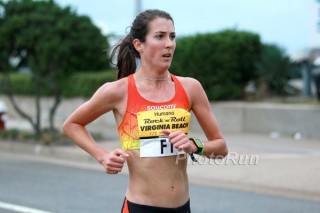
(c) 2016 Race Results Weekly, all rights reserved. Used with permission.
NEW YORK — The last time Boulder’s Laura Thweatt traversed the hills of Central Park, she was in a boatload of pain running her way to a top American finish in her marathon debut at the TCS New York City Marathon. Now, some six months later, the 27-year-old will race over the same stretch of asphalt, this time gunning for a podium spot at the 12th UAE Healthy Kidney 10K. While the roads may be the same, Thweatt’s mentality is much stronger thanks to her time here last year.
“The marathon really helped me find my feet and get back that confidence as far as ‘I know I can do this,’ and it really set me up to have a good 2016,” Thweatt told Race Results Weekly, speaking after taking part in a youth running event hosted at a local school by New York Road Runners. “[It] really helped get my head back in the game as far as coming off an injury [in 2015]. It feels great to be back here. It’s obviously a special place for me since November. I’m excited to tackle Central Park, Round Two.”
In Round Two, Thweatt will be up against a small but distinguished group of elite women all racing for the $25,000 top prize. Two-time world marathon champion Edna Kiplagat, IAAF World Half-Marathon Championships medalists Mary Wacera and Cynthia Limo, and Burundi Olympian Diane Nukuri are among the international athletes racing, while Thweatt and compatriot Maegan Krifchin lead the American charge.
Smiling warmly after participating in a shuttle relay with the children, Thweatt said she’s ready for what she knows will be a battle from the gun.
In 2015, Thweatt turned to longtime coach Lee Troop to begin formulating a plan for 2016. Working backwards, the pair knew the 2015 TCS New York City Marathon would be a great test before gearing up for the 2016 track season. Using Thweatt’s 2:28:23, seventh place performance in the marathon as a launching point, few could have expected the University of Colorado alum’s meteoric rise in the American ranks.
While she was always a consistent racer, Thweatt has used the momentum of her marathon success to catapult her full-throttle into 2016. Since November 1, 2015—the day she ran the marathon—Thweatt has set personal bests at 3000m and 5000m indoors (8:57.11 and 15:35.24), as well as at 10,000m (31:52.94).
The 10,000m race at the Stanford Invitational was a big 22-second personal best and a then-world leading time. But it also served to cross off a major to-do on Thweatt’s 2016 checklist: achieve the Olympic standard of 32:15.
“It was definitely a hard race,” said Thweatt, giving credit to teammate and pacemaker Sara Vaughn, as well as competitor Aliphine Tuliamuk-Bolton, who helped keep the tempo honest the entire way. “It felt really good to get the qualifier and just have that done with. I felt a lot of pressure going into that race just cause I didn’t have any track times, so I needed that to go well just to get that track confidence back.”
Using words like rhythm, confidence, and momentum, Thweatt is clearly in a supreme spot entering the lead-up to July’s U.S. Olympic Trials in Eugene. She’ll race the 10,000m on Saturday, July 2, against a field which is likely to include reigning IAAF World Outdoor Championships bronze medalist Emily Infeld, all-around ace Molly Huddle, and 2012 Olympian Kim Conley. It will be a tough race.
“The hay is in the barn, so at this point its just knowing you have everything you need in your wheelhouse and taking confidence from that,” Thweatt said. While the very hard training may be done, Thweatt still has unfinished business on the track.
Sticking to the plan, Thweatt hopes to achieve a few personal goals on the oval before returning to the marathon. Staying on the track will be beneficial for her marathon future, and can add longevity to her marathon career: a winning combination that Thweatt hopes serves her well not just for this year’s Olympiad, but also in 2020.
“I have 100 percent faith and confidence in what [Coach Troop] is asking of me, and I think if you have that with your coach then it makes a huge difference. That’s really where you start to see the performances come up. I’m just lucky to have him in my corner, and we’re excited for the next eight weeks and we’re excited for the summer. Hopefully things keep progressing,” she said.
Here in New York, Thweatt’s goal is to have fun, be competitive, and get a good, hard effort under her belt. Like the marathon was to her track season, Thweatt hopes the UAE Healthy Kidney 10K can be another stepping stone to future success.
“My goal is just to race the race. I’m not concerned about the time, I just want to get in there and mentally grind it and see how long I can stay in the mix,” she said. “Fighting all the way in—if I can do that then I’ll be happy with it.”
The post Laura Thweatt Hoping for More New York City Magic appeared first on Competitor.com.
New and Improved Changes to the Rock ‘n’ Roll Brooklyn Half Marathon
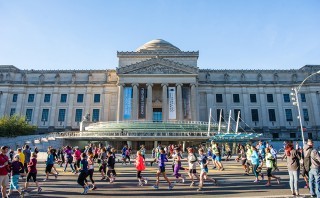
The 2016 Rock 'n' Roll Brooklyn Half Marathon will have a new start line in front of the Brooklyn Art Museum. Photo: Ryan Bethke
On any given day, running through Brooklyn can be a real treat. The famous New York City borough is full of incredible sights—from the gorgeous foliage throughout the borough’s Prospect Park to the stunning architectural gems in its brownstones that line its iconic streets. But on Oct. 8, running through Brooklyn will be better than ever with the Rock ‘n’ Roll Brooklyn Half Marathon, thanks to a new course and several other key improvements to the overall racing experience.
Given some of the challenges participants experienced at the start last year, organizers immediately began working on changes that were needed to make this event even better, including adjustments to the pre-race experience before the starting gun sounds. The race’s start line will now be conveniently located outside the iconic Brooklyn Art Museum, and corrals will line up on Eastern Parkway, avoiding any congestion around the Grand Army Plaza area. Additional security screening checkpoint entrances have been added for a quicker and easier entrance into the corrals. And to minimize the stress of finding a bathroom before the start, additional porta pottys have been added in the start line village. Lastly, the gear check area has been moved closer to the start line on Flatbush Avenue near the library, for easy access to drop off items you’ll need post race.
Besides these key logistical improvements, the race has also undergone a slight course facelift. Course operations director Ted Metellus has been front and center with the new design and says the impetus for the change was to make the experience a better one for participants and their loved ones.
“We wanted to simplify the security screening process to the corrals at the start,” said Metellus, adding that the change was a win-win for everyone. “The NYPD and the Office of Special Events supported us, because the new course provides participants easy access to the start and gear drop.”
The key changes focus on the start and opening miles. Runners will line up next to the museum and then head out along the city’s tree-lined Eastern Parkway and then back on Kingston Avenue in the first two miles. Between the second and third mile, participants will make a left onto Washington Avenue and get some great visuals of the fall foliage in Prospect Park on their right.
Elevation is everyone’s friend at this point in the race. Runners will experience some nice descents at the start and right after the 2-mile mark (100-plus feet). By mile 3, Metellus says runners will be back on the 2015 course along Ocean Avenue filled with trademark NYC architecture of historic brownstones and beautiful apartment buildings. Elevation-wise, miles 4 to 8 are all about cruising on flat pavement and checking out the best parts of Brooklyn while jamming to entertainment along the sidelines.
The course begins to get challenging from mile 10 as runners turn into beautiful Prospect Park. A steep uphill awaits at mile 11, so runners should be sure to save “gas in the tank” for this final stretch, but the views of the park and the roar of the crowds near the finish line should help. The course flattens out in the final mile as a stunning finish line awaits everyone in the heart of one of New York City’s most charming green spaces.
“The Rock ‘n’ Roll Brooklyn Half Marathon course offers a little bit of everything in an urban course,” Metellus said. “It’s got its climbs and its descents. It has its straightaways and its turns. But during it all, you will be running down tree-lined streets and through a beautiful park.”
In addition to all the improvements this year, there are also a lot of great things from last year’s Rock ‘n’ Roll Brooklyn Half Marathon that will remain the same. This race is one of the only running events to exclusively shut down major streets and landmarks in New York City’s most populous borough, which means runners will get an intimate and exclusive experience as they bound through parts of the Big Apple.
More good news: even more entertainment and cheer squads will be along the course than last year. So if you’re considering Brooklyn, don’t hesitate. Registration is now open for all runners at $55, which will increase as the date approaches.
The post New and Improved Changes to the Rock ‘n’ Roll Brooklyn Half Marathon appeared first on Competitor.com.
Out There: Thank You, Millennials
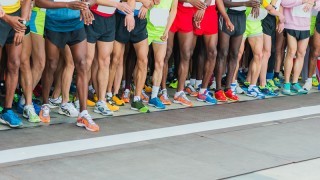
Millennials have a bad rap.
Sure, they pay way too much attention to the Kardashians, would rather text than talk on the phone, and insist on wearing yoga pants everywhere, but doesn’t every generation have its embarrassments? I mean, men once wore their hair in mullets and women found that sexy. Mullets. Sexy. Let’s reflect on that before we begin a conversation about man buns.
It’s become de rigeur to blame everything on the decline—economy, work ethic, the housing market, empathy—on “those damn millenials.” Added to that list: running.
“The running boom is over. Blame millennials,” says a recent Wall Street Journal article in a lede that set off a thousand Facebook comments. Their argument is centered on a recent Running USA study that showed millennial participation dipped from 35 percent of race entries in 2014 to 33 percent in 2015. Runners between the ages of 18 and 34 are trickling away from the sport in search of other physical challenges, and some people are happy to bid them good riddance.
“Oh, those poor millennials,” my baby-boomer friend John cried in mock horror after reading the story. “Running is just too hard for them!”
“They just got so bored with dancing around, getting sprayed with fun little colors!” another taunted with glee.
In recent years, there’s been a large increase in fun runs, adventure racing, and gamified workouts, driven by a millennial crowd whose focus is enjoyment, not competition. That annoys some people, who accuse young adults of dumbing down the sport. Terms like “oblivious” and “cutesy” and “not real runners” get thrown around in discussions of how running has changed over the years.
And the sport has changed. There’s no question about it. It’s different from the Very Serious Running scene of 20 or 30 years ago, where races were only for hardcore runners in the prime of their fitness. Today, just about anyone can train for and enter a race.
Thank goodness for that. Actually, thank millennials for that.
You see, this generation gave us ridiculous neon races and zombie-themed runs, and it made running appeal to the average couch surfer. They’re breathing new life into once-ignored racing formats like the mile. They’re the ones convincing their parents to train for their first 5Ks in their 50s, 60s, and beyond. Their color runs are about as far as you can get from “serious” racing, but their young children love doing them as a family. It’d be nice if the next generation loved running more than, say, hoverboards, don’t you think?
Say what you want about those damn millennials, but their influence on the sport has been for the better. Evolution is a critical component of survival and longevity—running is not exempt from that rule. And boy, have we evolved.
To be clear: I don’t mean to suggest that we do away with competitive racing and make every run a neon extravaganza filled with bubble machines, a petting zoo, and a Ryan Gosling kissing booth (though I must admit I would totally do that race). Competition between racers is an inspiring and worthy pursuit.
But it’s not the only way to be a runner. There’s value in making race day a celebration – of life, of health, of joy. Running is branching off into all sorts of wonderful, weird, and wacky tangents, and it’s quite thrilling to watch.
The running boom is over. Blame millennials.
But first, let’s thank them.
* * *
About The Author:
Susan Lacke does 5Ks, Ironman Triathlons and everything in between to justify her love for cupcakes (yes, she eats that many). Susan lives and trains in Salt Lake City, Utah with three animals: A labrador, a cattle dog, and a freakishly tall triathlete husband. She claims to be of sound mind, though this has yet to be substantiated by a medical expert. Follow her on Twitter: @SusanLacke
The post Out There: Thank You, Millennials appeared first on Competitor.com.
Ryan Hall's Blog
- Ryan Hall's profile
- 21 followers



